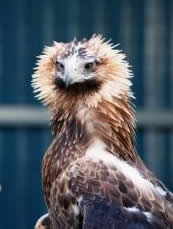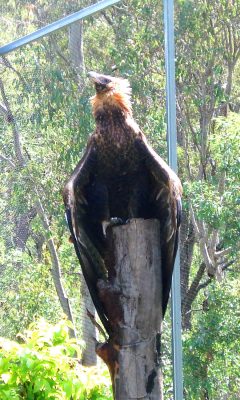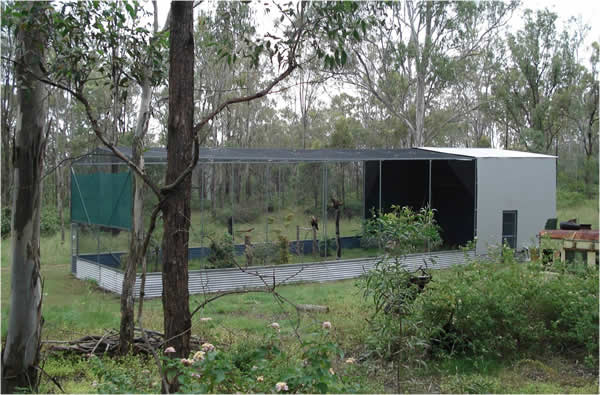
Beau, a striking Wedge-tailed Eagle, is a magnificent bird of prey—glorious in color, breathtaking in flight, and truly unique in behavior.
This remarkable eagle was first discovered standing motionless on a single post in the Ravensbourne area. Silent and unwavering, it seemed to be waiting—for an owner, a partner, or perhaps just food. Intrigued by the bird’s unusual persistence, the farmer who owned the property watched as days passed. Concerned that the eagle might be injured or starving, he offered it a kilo of minced meat. Beau effortlessly hopped down, consumed the food, then returned to his solitary vigil atop the post.
That evening, worried for the eagle’s well-being, the farmer reached out for assistance. I asked him to check in the morning, and if the bird remained, I would arrange for an experienced ranger to assess the situation and bring the eagle into care if needed. Sure enough, Beau was still there. Another kilo of mince was provided, and just as before, the eagle accepted the meal but showed no desire to leave.
With little resistance, the ranger was able to capture Beau, who remained calm when handled. I later received a message confirming that he had been placed in a small aviary, where the ranger observed only one alarming detail—his extreme thinness. Upon my own inspection, I found no signs of injury, yet the bird was undoubtedly emaciated. His unusually light plumage suggested youth or a pale morph, but other physical traits, such as his beak and feet, indicated he had already lived for several years. Curiously, after two moults in captivity, his feathers have retained their light coloring, an unusual trait, as most eagles darken with age.

Beau’s behavior is unlike that of wild birds of prey typically observed in captivity. During feeding time, he flies to a perch similar to the post he was first found on, fluffs out his neck feathers like an Elizabethan collar, and ruffles his wings as if expectantly waiting. When food is delivered, he swoops down, strutting about with powerful legs and outstretched wings, selecting the best pieces in a theatrical display.
It is likely that Beau was once captive—either released or escaped—but never learned to hunt for himself. In all my years of caring for injured birds, I have never encountered a bird of prey that could not be returned to the wild. However, Beau has been deemed unsuitable for release and will remain in care, awaiting placement in a wildlife park or zoo.
Thanks to the generosity of Wildlife Queensland Toowoomba Branch and the Toowoomba Regional Council, Beau is now one of the first raptors to inhabit our center’s new aviary, specially designed to accommodate birds of prey. His story continues, and he remains a spectacle to behold—a true testament to the resilience and mystery of the natural world.

